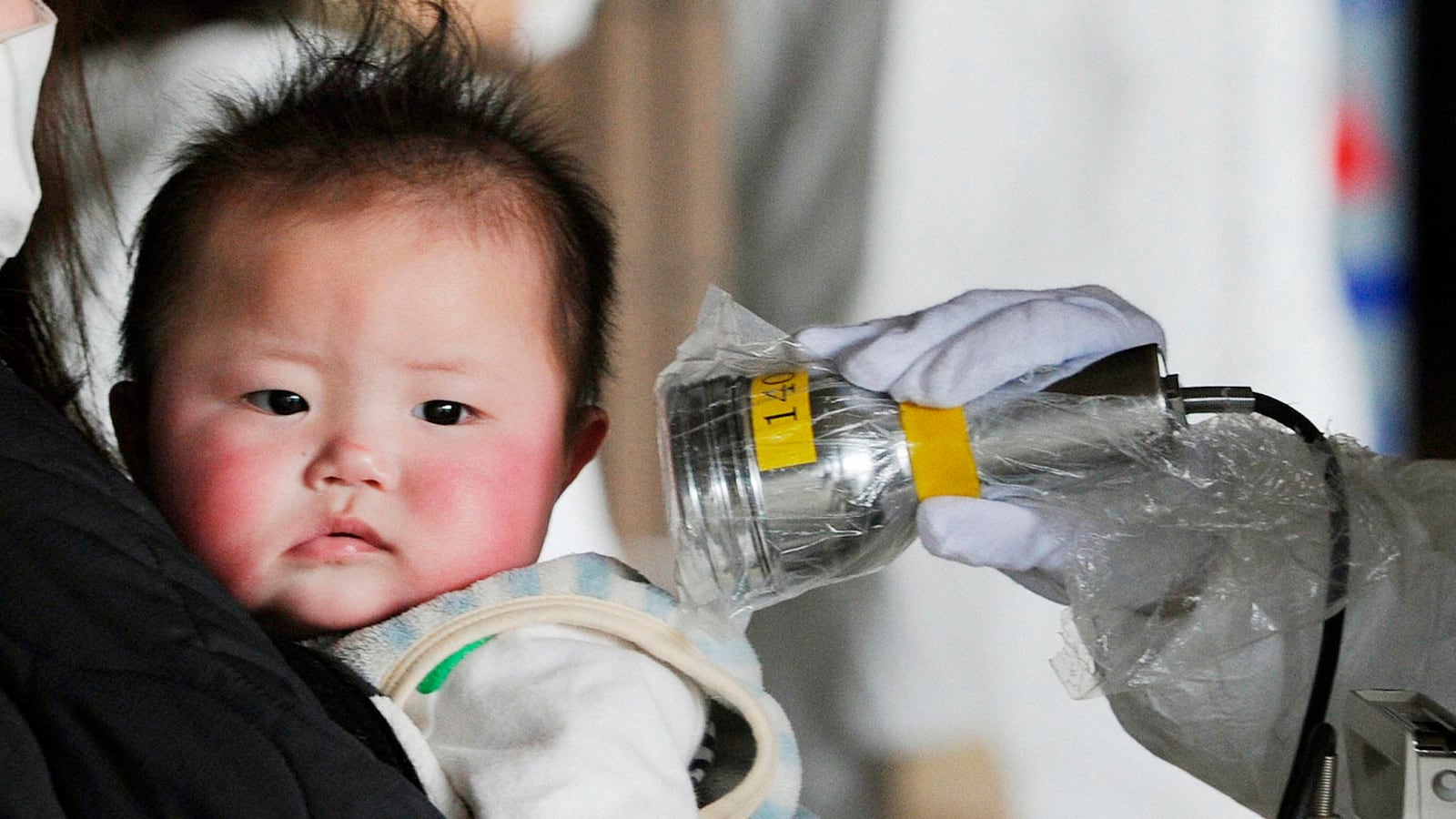The Daily Beast recently obtained unpublished data on birth defects in Japan, which showed a small increase in prevalence rates for 2011—the year there was a triple nuclear meltdown in Fukushima Prefecture. The prevalence rate—the frequency of malformations among childbirths, such as holes in the heart (atrial septal defect)—was 2.43 percent, a number that is still below what is considered a normal figure among radiation experts. The university that conducted the study will not release regional figures. However, several nuclear experts in and outside of the country assert that Japan needs to seriously measure the health impact of its nuclear problems, including birth defects, “with not just annual data but monthly data and broken down by prefecture.”

On March 11, 2011, a magnitude 9.0 earthquake and a tsunami hit the northeast coast of Japan, which triggered a triple meltdown at the Tokyo Electric Power Company (TEPCO) operated Fukushima Daiichi Nuclear Power Plant. The meltdown released massive amounts of radiation into the atmosphere and the water supply, with some reports suggesting certain types of radioactive materials have been released at levels that surpassed Chernobyl. Earlier this month, Japan’s Nuclear Regulation Authority said radiation readings near water-storage tanks at Fukushima Daiichi had reached previously unrecorded high levels. Near one group of tanks the levels reached 2,200 millisieverts per hour. An unprotected person standing close to the contaminated areas would receive a lethal radiation dose within hours.
The exact amount of radiation released into Japan from the accident is still unknown. Japan’s now defunct NISA (Nuclear Industrial Safety Agency), originally hid important radiation data from the general public, to avoid causing panic. Independent studies suggest the amounts of radiation released were far above the Japanese government’s official findings. Radioactive materials have also been leaking into the groundwater for possibly months and TEPCO is making efforts to contain the damage. After the initial nuclear disaster in March of 2011, Japan took months to finally admit that a triple nuclear meltdown had occurred.
The data obtained by the Daily Beast was compiled by Yokohama City University, which has been doing studies of birth defects in Japan for over a decade. The 2011 Report on Congenital Malformations notes the prevalence of malformed infants as 2.43 percent, the highest figure since 1999 (1.48 percent). However, the figures for 2010 were 2.31 percent, indicating only a small increase between 2010 and 2011. The 2011 report surveys infants born from January 1, 2011, to December 31, 2011, in 170 hospitals throughout Japan.
Since 1999, the Yokohama City University has been releasing the statistical report regularly around the month of May, but did not publish the data this year. After repeated requests, it finally provided the 2011 data, which is still currently unavailable to the public.
The university, while releasing the total figures, would not release prefecture-by-prefecture data. Japan is divided into 47 prefectures. Dr. Fumiki Hirahara who is in charge of compiling the data stated, “It makes absolutely no sense whatsoever to try to compare the prefectural data. There is no meaningful increase in in birth defects since 2011, in my opinion.” British radiation expert Dr. Ian Fairlie disagrees, noting, “What would be needed is monthly, not just annual data and broken down by Prefecture.”
Dr. Hirahara noted that every year since 2006 has seen a greater prevalence of birth defects that he suspects is due to Japanese women giving birth at an older age. The university is still collecting the data for 2012. Dr. Hirahara notes, “There will always be cases of birth defects, even in Fukushima.” He doubts 2012 data will show a significant increase in birth defects in Fukushima or Japan. “But I don’t know for now, I need to finish up the report for 2012. We will have to join our efforts with the people in Fukushima and compare our work,” he added.
Dr. Robert Peter Gale, author of Radiation: What It Is, What You Need to Know is also skeptical of any connection between the meltdown at Fukushima and the 2011 data. “The rate of roughly 2.5 percent is lower than the normal prevalence which is 5 to 10 percent. Also, the types of abnormalities reported are not those associated with radiation exposures. The bottom line is there is no convincing evidence of increased birth defects.”
Alexey V. Yablokov, outspoken author of Chernobyl: Consequences of the Catastrophe for People and the Environment, communicated his thoughts on the data via several emails noting, “The Japanese government is not trustworthy when it comes to releasing information about Fukushima, which is Japan’s Chernobyl. The assertion that prefecture specific data would not be useful is ridiculous … A real national comparative study needs to be conducted.”
Health concerns abound in Fukushima about the safety of living in the area. In April 2011, the Japanese government raised the radiation limits for exposure at schools near the plant to 20 millisieverts. A senior nuclear adviser to the government at the time abruptly resigned in protest saying the level was 20 times too high, especially for children who he said are more vulnerable to radiation than adults.
The government of Fukushima announced in late August the results of an ongoing study on the impact of radiation on children under 18 who were living in Fukushima at the time of the accident. Of the roughly 360,000 children, there were 44 suspected cases of thyroid cancer. Radioactive substances released during an accident and afterwards can accumulate in children’s thyroid glands, which increases the risk of developing cancer. In the 1986 Chernobyl nuclear disaster, thyroid cancers cases started to show up after four to five years after the accident.
The Japanese government has a past history of censoring negative information about health damage caused by corporate malfeasance, as in the mercury poisoning cases during the ’50s and ’60s, the HIV-tainted blood cases in the ’80s, and the Dioxin contamination problem in the ’90s. It has often avoided detailed epidemiological studies that might show a wider range of harm. In the Minamata mercury poisoning case, the central government even worked with the polluting corporations to minimize evidence showing the cause and range of the illness, in consideration of the negative economic impact such revelations would have. One reason Japan government agencies have a long history of favoring corporate entities like TEPCO over the welfare of citizens is the common practice of bureaucrats retiring to prime posts in the industries they once regulated.







